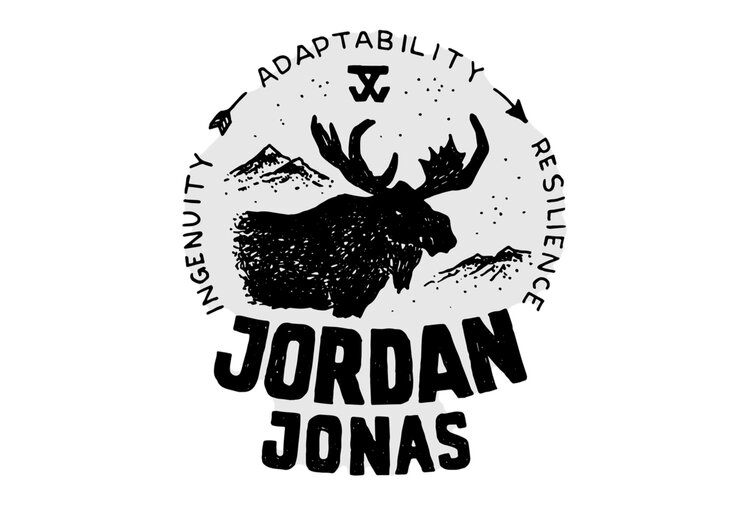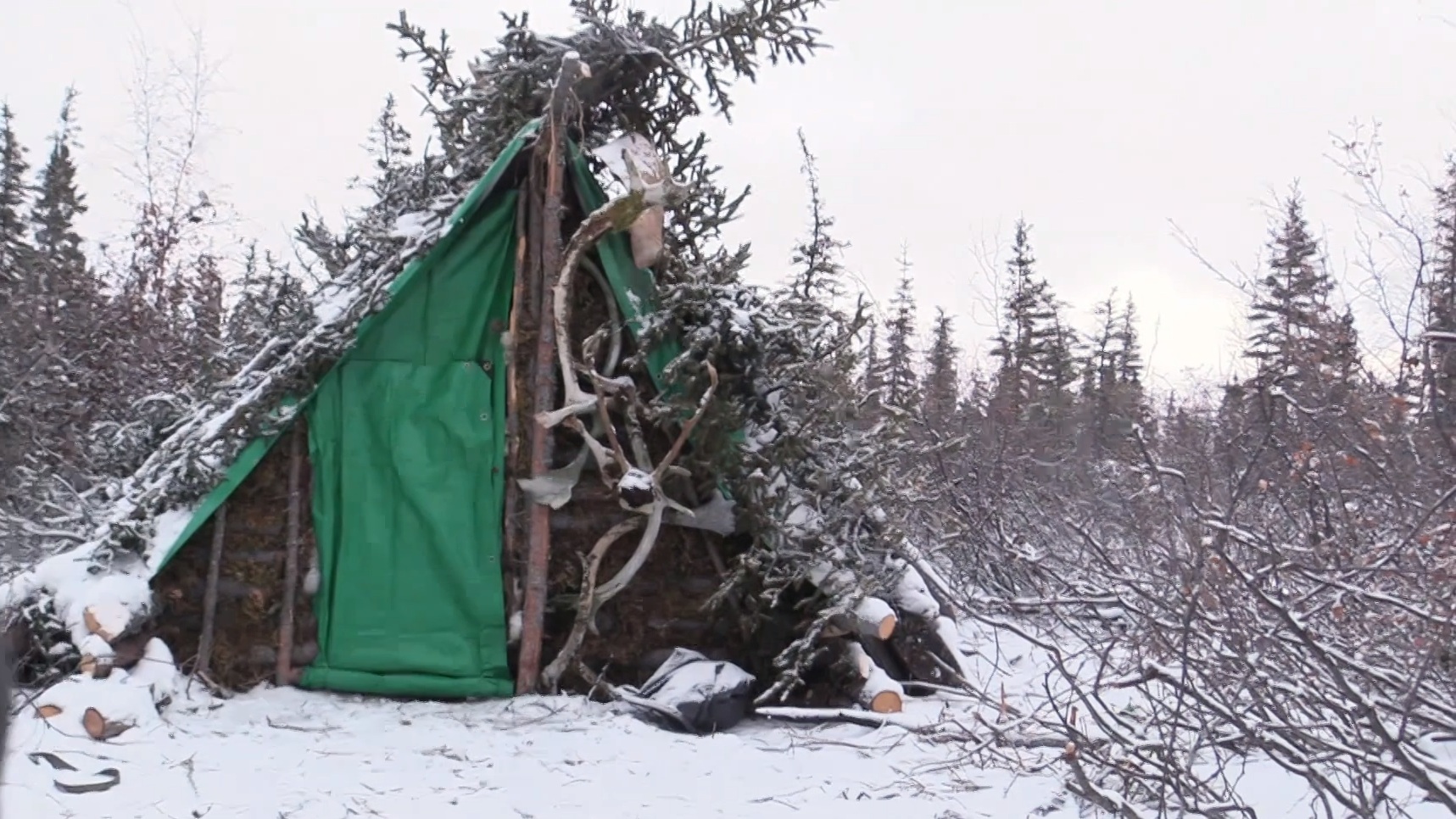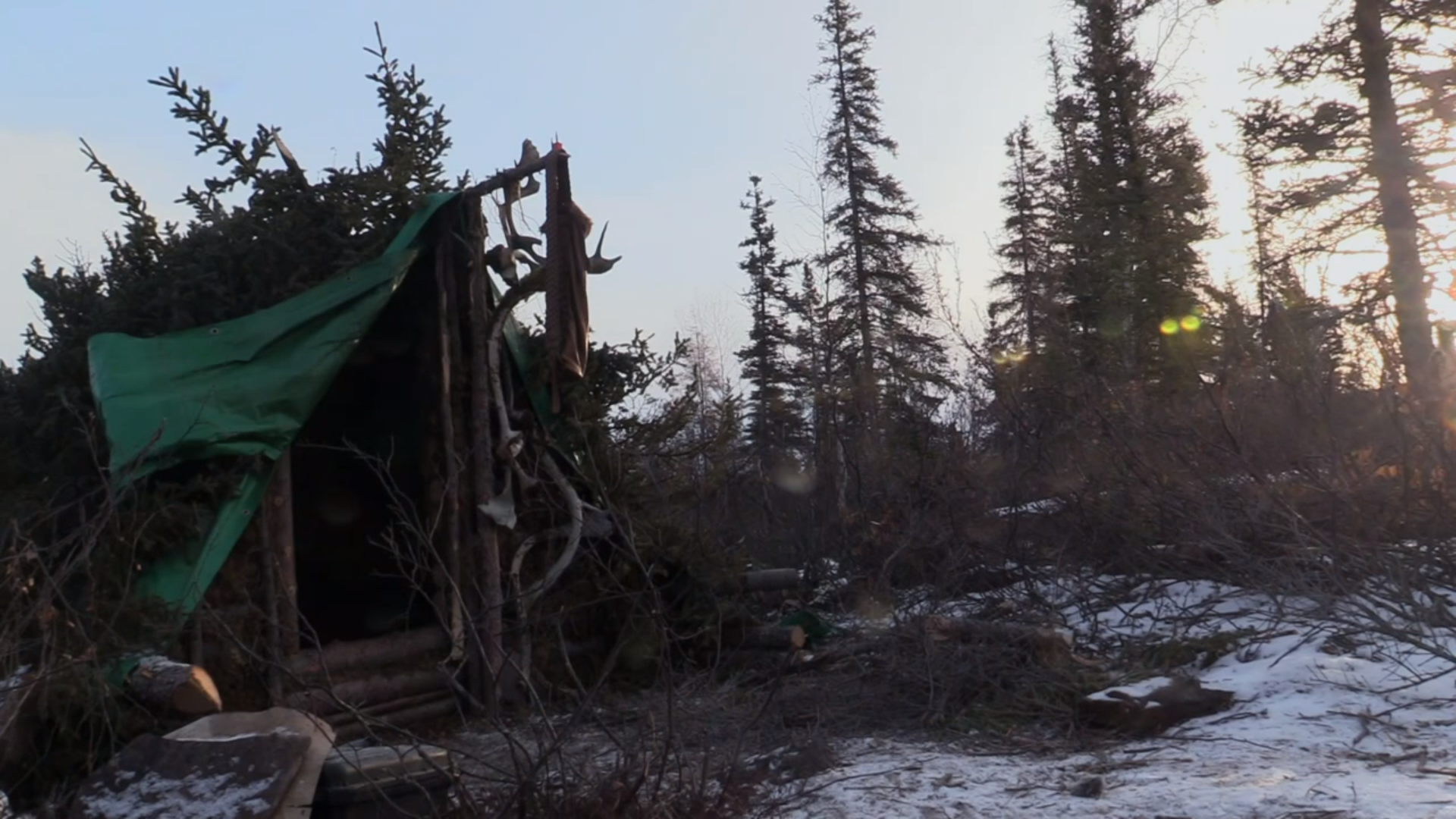There has been a lot of questions and discussions of shelters. Mine has not featured prominently, nor was it my focus; however, there was a lot of thought behind what I did have and how I achieved the vital features of warmth, smokelessness … Here they are:
I decided to go for a small (easier to heat) a frame shelter with a few important features. As you can see, it was logs chinked with moss. The roof was my tarp, but reinforced more that you might think. Why? (Well for one, to hold meat while it smoked) But also so that as snow fell I could slowly bury my relatively small shelter - snow is an excellent insulator and that seemed the most calorie efficient way to go about insulating. As more snow accumulated, it would be buried (a process you could speed up by shoveling some snow on, which I did). I also made my door out of tarp, as it was very important to seal the shelter and the door is the leakiest area. I would eventually fur line the door to really make a nice seal. Thirdly, I made a collapsible hood vent. This was very effective at catching and funneling out smoke, and importantly when the fire was low at night I could close and seal my chimney making my shelter nearly draft free with no holes open to the outside world. I also stone lined the area around my fire for safety -both the roof and the wall - and made an air tube out of cans to feed air into my fire.
The different between a SEALED tipi or simple shelter and an actually WARM cabin is countless thousands of calories and hours. And anything short of a GOOD cabin (not leaky and probably with a wood stove) will be inevitably cold...because as long as air is free to come in, it will be about the same temperature inside as out. I.E.: Four insulated warm walls + one open window, or a bad door will mean the inside temp is nearly same as outside. However, a sealed (leakproof) shelter will at keep air movement at bay which is key to allow some warmth at least while the fire is going. This required no extra hauled logs, and no extra chopping. The key factor here being this: outside of a herculean effort – any makeshift shelter built in this climate will be cold come November and beyond. It won’t “hold heat” very long once the fire is out, and the key is to stop air movement and get calories to keep your body able to produce heat.
Heating a cabin with a campfire would be difficult as even if the smoke issue is solved, and an open fire is not hot enough (without burning your shelter down) to accumulate much thermal mass...an external fireplace/chimney is very inefficient and in Arctic conditions will not be adequate.
So your choices as I saw them are to have a leaky/frigid shelter, a sealed shelter (warmth when needed and no air movement), or an elaborate cabin WITH a nice door and an indoor fireplace (which until finished will remain “cold” just like option B.
Ultimately, I decided that all the time and calories that would be spent building an elaborate shelter is time that I must be getting food…whether by fishing, hunting, or crafting (nets, poles, traps, etc). Not only would I burn calories expending the effort needed to build something more robust, but also I would lose all potential calories I could be acquiring while hunting/fishing at that same time. I have spent multiple winter’s in tipis in weather as cold as -58…it is doable. What isn’t doable is spending even one winter without adequate food. It IS possible to live in the north, to overwinter, and to even thrive. But your priorities must be in order. Food is my top priority.
So far this proved effective, as cold hasn’t been an issue for me, and in fact, I had more of an sweating while fishing than freezing - you may of noticed I have yet to even wear my fur parka (Aside from my boots... My feet would get cold, making me stop what I was doing to warm them regularly. Rubber boots sweat, and sweat means cold feet. I gravely missed my reindeer fur boots I have in Russia but couldn’t get mailed back in time for the show.) But with hot rocks wrapped in a shirt at the base of my bag and my down mittens over my feet, i was rarely cold at night either. (especially with the moose/sheepskin parka/rabbit vest mattress)
(These are only my personal thoughts, and not meant to be a critique of anyone else’s methods - some of which are very impressive)





